Key takeaways:
- Climate action is vital for preserving ecosystems and promoting biodiversity, as demonstrated by the creation of backyard ponds.
- Location and design are key factors for successful pond construction, including sunlight exposure, vegetation proximity, and varying depths.
- Maintaining water quality through regular monitoring and natural filtration methods supports a healthy pond ecosystem.
- Encouraging diverse wildlife involves creating varied habitats with different plant types and structures, enhancing the overall ecosystem interaction.

Understanding climate action importance
Climate action is crucial for preserving not just the environment, but the delicate balance of ecosystems that sustain wildlife. Reflecting on my own backyard pond, I’ve seen how each species, from frogs to dragonflies, contributes to a vibrant web of life. Have you ever considered how small actions can lead to significant changes in our local ecosystems?
When I first established my pond, I was amazed at how quickly nature responded. Within weeks, birds began to visit, and the sounds of croaking frogs filled the air. This firsthand experience highlighted the tangible benefits of climate action – it creates habitats, promotes biodiversity, and restores some of what we may have lost.
Ultimately, understanding the importance of climate action goes beyond statistics; it’s about connection. Each ripple in my pond serves as a reminder of my responsibility to protect our planet. How do you feel when you witness nature thriving in your own space? That sense of wonder is a motivating force, driving us to advocate for sustainable practices that benefit all living beings.
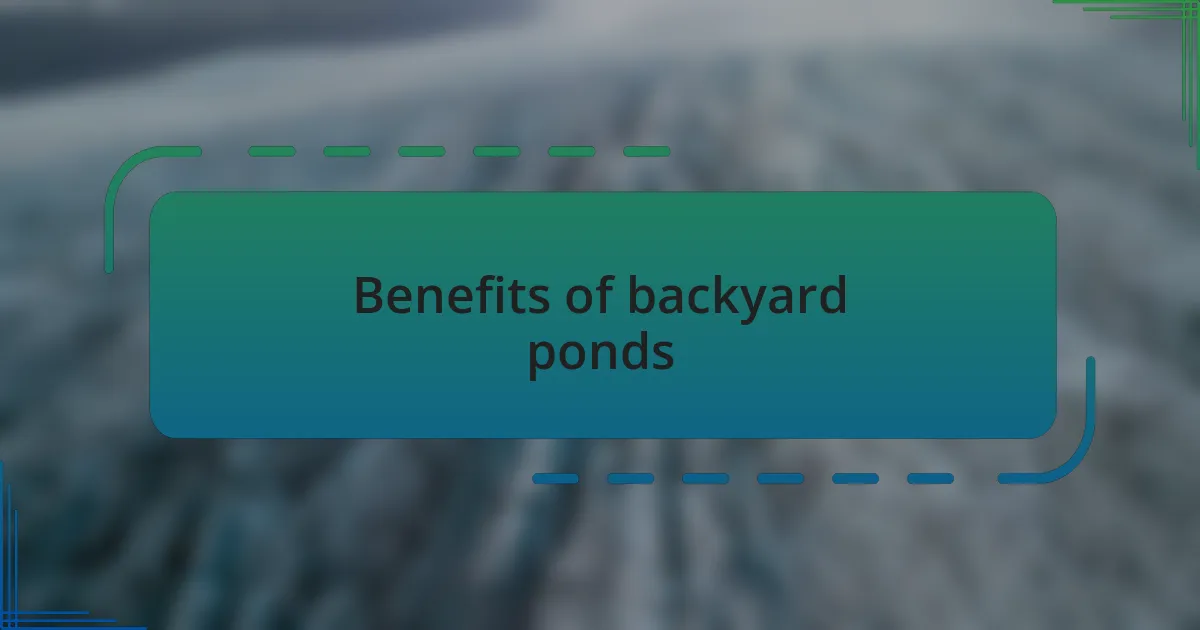
Benefits of backyard ponds
Backyard ponds offer a myriad of benefits, both for wildlife and the environment. When I observe the frogs and salamanders making their home in the damp surroundings, I’m reminded of the critical role these creatures play in maintaining the balance of our ecosystem. Their presence not only signifies a healthy habitat but also supports sustainable pest control, which is a win-win for any garden.
One of the most striking benefits I’ve experienced is the increase in local bird populations. When I added a few native plants around the edges of my pond, I suddenly found myself host to a vibrant array of species. The joyful chorus of birdsong in the early morning becomes not just a wake-up call but a reminder of how simple changes, like creating a pond, can draw wildlife into our lives. Isn’t it incredible how a small body of water can become a sanctuary for so many?
Moreover, these ponds serve as vital water sources during dry spells, supporting not only the animals that visit but also the flourishing plants that provide shelter and food. I often find myself reflecting on how these practices foster resilience in our local environments. Isn’t it profound that something I built in my backyard could have such a far-reaching impact on biodiversity? Each visit from a curious creature reinforces the importance of nurturing these small ecosystems for our collective future.
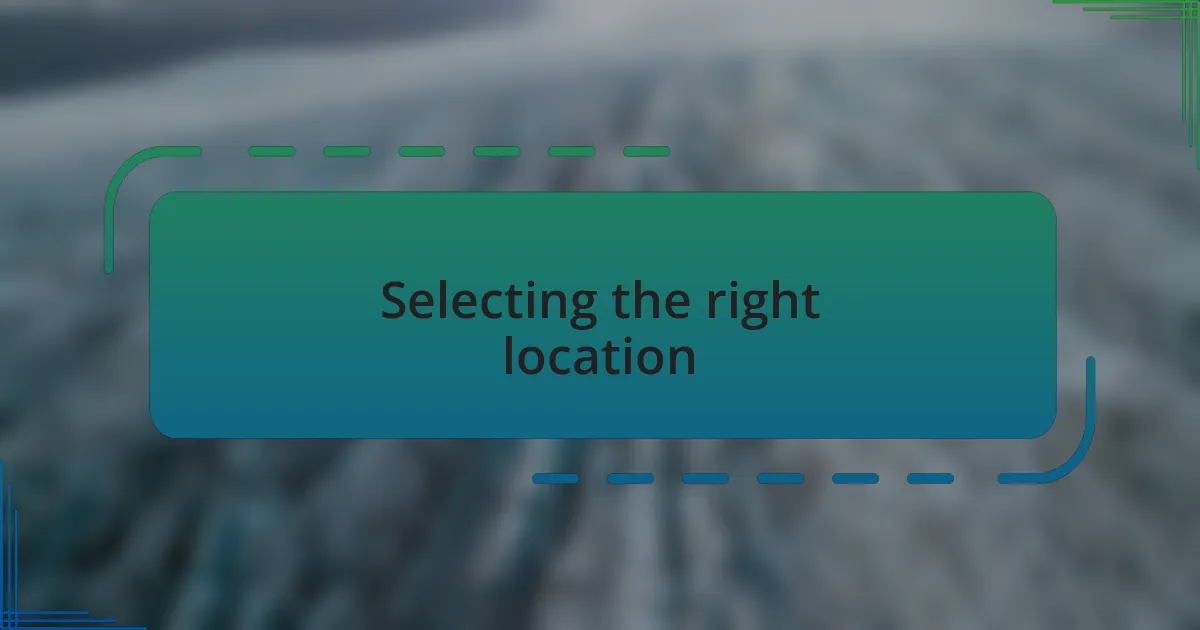
Selecting the right location
Finding the right spot for your backyard pond is crucial to its success and the wildlife it attracts. I remember when I first chose a location in my yard that received partial sunlight throughout the day. This balance not only helps keep the water temperature stable but also encourages algae growth, which, surprisingly, provides food for many aquatic creatures. Have you ever noticed how organisms thrive in sun-dappled areas? It’s a delicate dance of light and life.
When selecting a location, consider the proximity to existing vegetation and windbreaks. I placed my pond near some large shrubs, knowing they would provide shelter for animals and shade during the hottest part of the day. It was fascinating to watch how quickly the local fauna took advantage of this setup, making my pond their haven. If you’re pondering where to place your pond, think about how those natural elements can both benefit your ecosystem and create a delightful place for observation.
Lastly, drainage is another key factor that can’t be overlooked. I learned this the hard way when my first attempt resulted in a small swamp rather than the serene pond I envisioned. Ensuring that your site has good drainage protects the health of your pond and prevents erosion. Have you thought about how water flow affects the stability of your wildlife habitat? Finding the right location means you’re setting the stage for life to flourish in ways you might not have imagined.
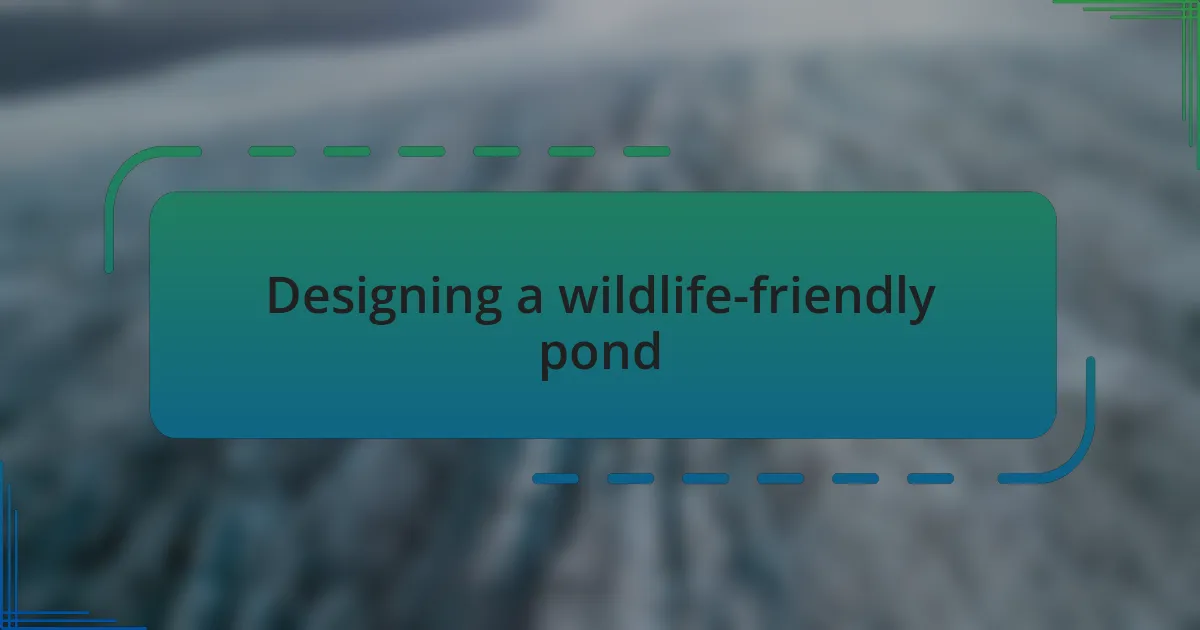
Designing a wildlife-friendly pond
Creating a wildlife-friendly pond isn’t just about the water; it’s also about the surrounding habitat. When I built mine, I incorporated native plants around the edges, like iris and cattails, which not only add beauty but also provide essential cover for various species. Have you ever noticed how certain plants attract pollinators? By choosing flora that thrives in your region, you invite a diverse array of creatures to visit and settle in.
The depth of the pond is equally important. I found that having varying depths created different habitats within the same pond. Shallow areas are perfect for tadpoles and small fish, while deeper zones provide refuge for larger species. It’s mesmerizing to see a frog leap from one zone to the next, don’t you think? By designing for diversity, I constructed a small ecosystem that feels alive at every inch.
Accessibility for wildlife is a fundamental aspect I prioritized. I sloped the edges gradually, allowing small animals to easily enter and exit, rather than steep drops that can be barriers. This thoughtful design fosters not only serene wildlife interactions but also gives me peace of mind, knowing I’m nurturing a welcoming space. Have you thought about how small changes can make a big difference in creating an inclusive environment for the local fauna?
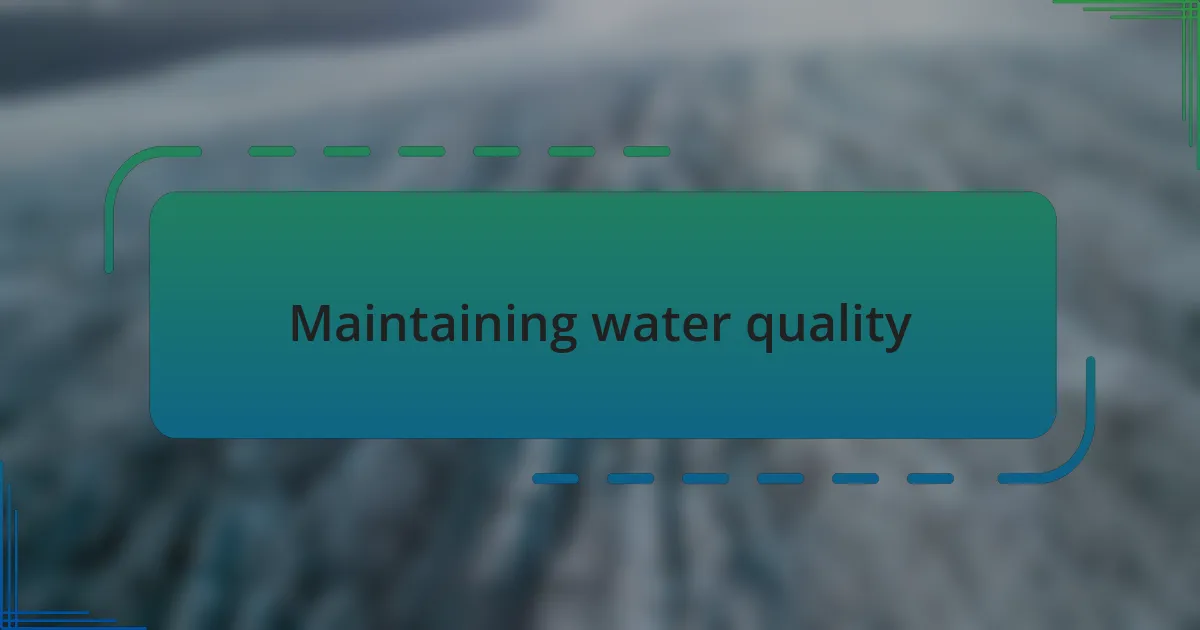
Maintaining water quality
Maintaining water quality is crucial for the health of my pond and its inhabitants. Regularly testing the water for pH levels and contaminants has become a routine for me. I remember the unsettling feeling when I noticed a drop in oxygen levels one summer; it prompted me to take action and introduce aquatic plants that promote oxygenation. Have you ever wondered how something as simple as water quality could affect the whole ecosystem?
I also use a combination of natural filtration methods, like placing rocks and gravel strategically, to keep the water clear and vibrant. Observing the way beneficial bacteria thrive in these materials reassures me that I’m supporting the pond’s natural balance. It’s fascinating to see how such small organisms can significantly impact the water clarity and overall health of the pond, wouldn’t you agree?
Regular maintenance, such as removing debris and leaves, keeps my pond from becoming stagnant. I often spend quiet afternoons skimming the surface, feeling like I’m part of an ongoing conversation with nature. Each time I clear away detritus, I can practically hear the sigh of relief from the fish and frogs, as they appreciate the cleaner, healthier habitat. There’s a genuine satisfaction in knowing I’m contributing to a thriving ecosystem, and I hope you find similar joy in your own efforts.
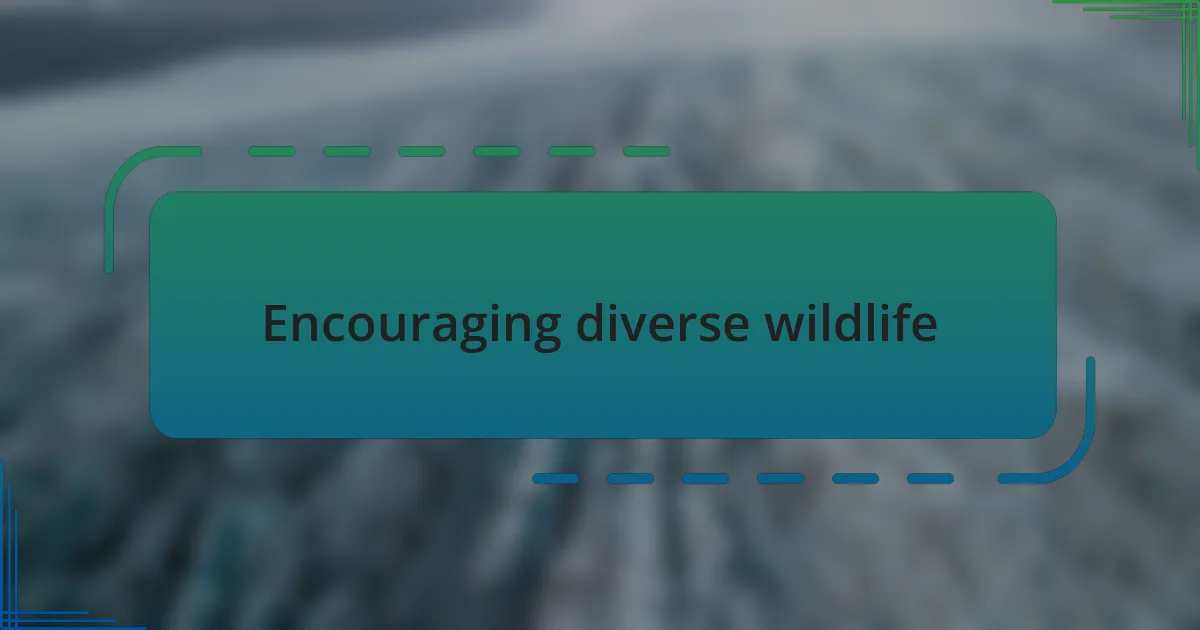
Encouraging diverse wildlife
Creating an inviting habitat for diverse wildlife has been one of the most rewarding aspects of maintaining my pond. I often find myself captivated by the various species that visit—from dragonflies flitting about to colorful frogs nestled among the reeds. One day, I was thrilled to spot a family of ducks taking a leisurely swim; it felt like a secret little gift from nature. Have you ever felt that thrill when wildlife surprises you?
To promote diversity, I’ve intentionally added different types of plants around the pond’s edge. This creates a range of microhabitats, allowing insects, amphibians, and birds to coexist in harmony. I vividly recall the first time I noticed a cluster of butterflies dancing around the flowers I had planted. Seeing them thrive made me realize how crucial it is to offer a variety of plants that bloom at different times, ensuring a constant supply of food and shelter throughout the seasons.
Encouraging diverse wildlife isn’t just about adding plants; it’s about creating a balanced ecosystem. During one summer, I installed a small rock pile as a basking spot for turtles, and to my delight, it soon became a popular hangout for many creatures. Watching them sunbathe while I sip my morning coffee feels like witnessing a beautiful interplay of life. It’s truly an inspirational reminder of how even small efforts can lead to a flourishing community of wildlife around us.

Sharing experiences and tips
Sharing experiences and tips is essential when it comes to maintaining a thriving pond for wildlife. One of my favorite techniques has been incorporating a variety of water depths. This simple adjustment has done wonders in attracting different species, from small fish to the occasional heron. Have you ever experimented with varying water levels to see who shows up? I can confidently say it opens up a world of possibilities.
I always recommend keeping a log of the different wildlife you observe. On days when I don’t feel as motivated, flipping through my notes and seeing how many species have visited can reignite my passion. There was a memorable evening when I jotted down my first sighting of a blue heron; I still remember that feeling of excitement and validation. It serves as a reminder that each creature counts and contributes to the overall beauty of the ecosystem.
Another tip that’s worked wonders for me is establishing a shaded area. I placed a few large rocks and overhanging branches to create cool spots for animals to rest. This not only diversifies the wildlife but also adds an enchanting ambiance to the pond. It’s amazing how such small changes can have a significant impact—how can we create spaces that reflect the complex beauty of nature?